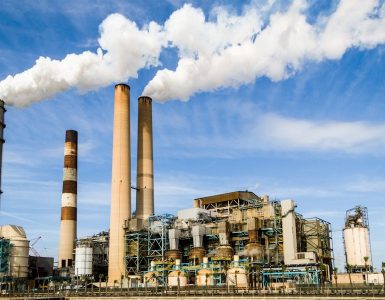On his last day of graduate school at Arizona State University, Bob Maguire was in a rollover accident. He was completely unharmed.
The next day he got on a plane to Rochester, New York to start a job as the vice president of sales at a software company.
“Got on the plane the next morning, I was alive. I didn’t break anything, I didn’t have a scratch,” Maguire said. “I shouldn’t be here, but I just remember feeling, ‘am I doing everything I can to help people or to make a difference?’ The answer was no.”
He decided to go into regenerative medicine and is now president and CEO of BioLab Sciences in Scottsdale, Arizona.
“We are a regenerative medicine company focused on giving people the ability to have optimal performance in their lives to perform optimally,” he said. “If someone has bad knees or joints or it’s hard for them to walk around, using regenerative medicine to give them the quality of life back that they had… without invasive surgery and medication.”
Regenerative medicine is a branch of translational research in tissue engineering and molecular biology. It is the process of replacing, engineering or regenerating human cells, tissues or organs to restore or establish normal functions.
BioLab Sciences has multiple amniotic products including Fluid Flow, an amniotic liquid allograft that advances soft tissue repair, replacement and reconstruction, and Membrane Patch, a dehydrated human amnion membrane allograft that preserves many of the natural growth factors and cytokine to help regenerate soft tissue while inhibiting inflammation and scar tissue formation.
But what makes BioLab Sciences stand out among other regenerative medicine companies is their wound care product MyOwnSkin.
“We have some products that are the same if not similar…Our differentiator, game-changer is MyOwnSkin,” Maguire said.
“MyOwnSkin is a painless, non-surgical procedure which leverages a small sample of patient’s own skin to produce partial-thickness skin grafts in a week,” according to BioLab Sciences.
BioLab Sciences uses a patient’s own cells and seed them on a collagen extracellular matrix — a network of fibrous proteins and proteoglycans that fill the space between cells within the tissues.
The lab takes a skin sample the size of a pencil eraser and blood to create three 4”x 4” (300cm2) patches of the patient’s own skin that can be used on a burn, venous leg ulcer, diabetic foot ulcer or any type of wound that won’t close.
Using a patient’s own skin helps lower the chance of rejection, faster healing and less scarring, said Maguire.
“The key thing is not having to harvest skin from other parts of the body. Typically, if someone has a larger wound, they’ll harvest the patient’s own skin… that’s called the donor wound versus the recipient wound site, which is the original.” Maguire said. “They say many people, the donor wound can be more painful than the recipient wound. It can lead to infection.”
The process for MyOwnSkin is also faster, after getting the skin and blood samples, it takes BioLab Sciences seven days to make the skin samples for doctor application.
MyOwnSkin is still in a trial process but was recently used to help a three-year-old girl in Nevada with sindactilia, when two or more fingers or toes are stuck together.
“They took a skin sample the size of a pencil eraser, vials of blood, and we made three 4″x 4″ patches of her own skin,” Maguire said. “They were able to separate her fingers and use [her skin] to heal it, and they didn’t have to harvest her own skin off of other parts of her body. The parents were ecstatic, the physician was ecstatic, and the girl now has fingers that are separated and functional. It’s exciting.”
“The most important thing we care about is the patient, so for them doing a single application versus eight to 10 applications, it’ll cut down on time, it’ll cut down on healing time, cut down on missed work,” Maguire added. “It’s an exciting time and I think for anyone helping people, it goes back to that rollover. Just being able to help people and make a difference… To me, there’s nothing better than that.”
For more information on BioLab Sciences, click here.
Photo courtesy of BioLab Sciences
















Add comment